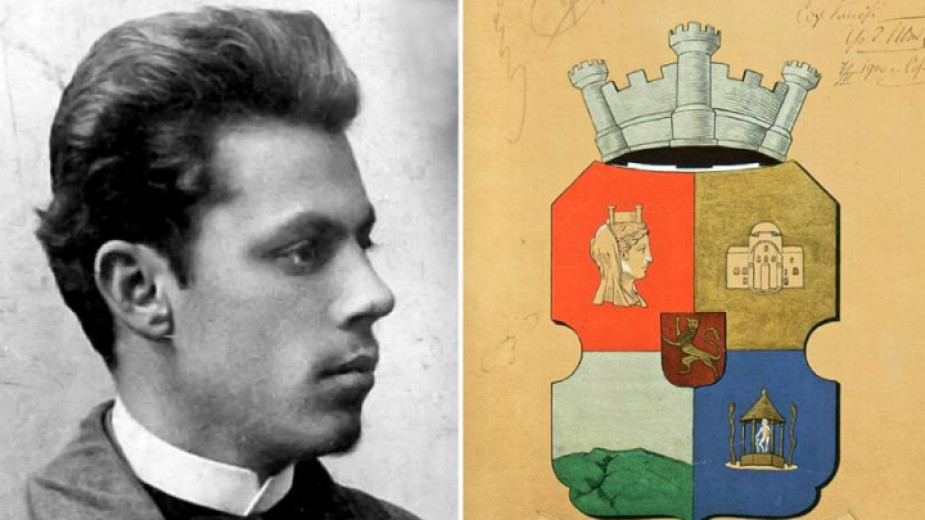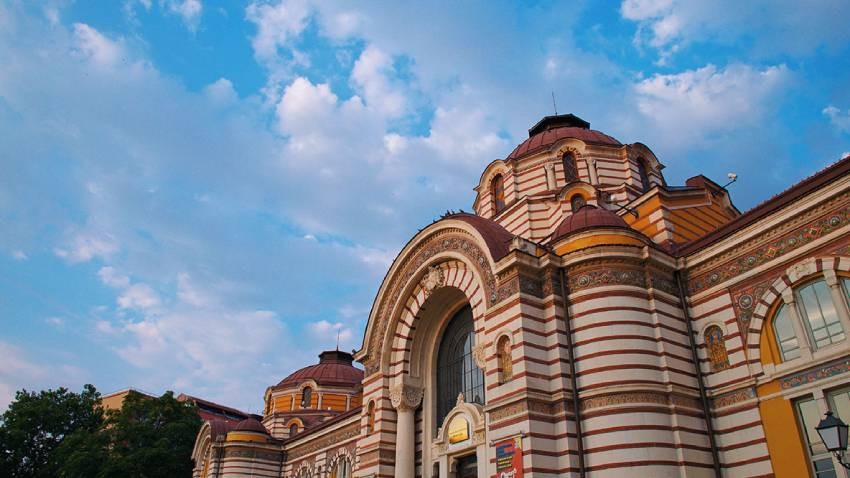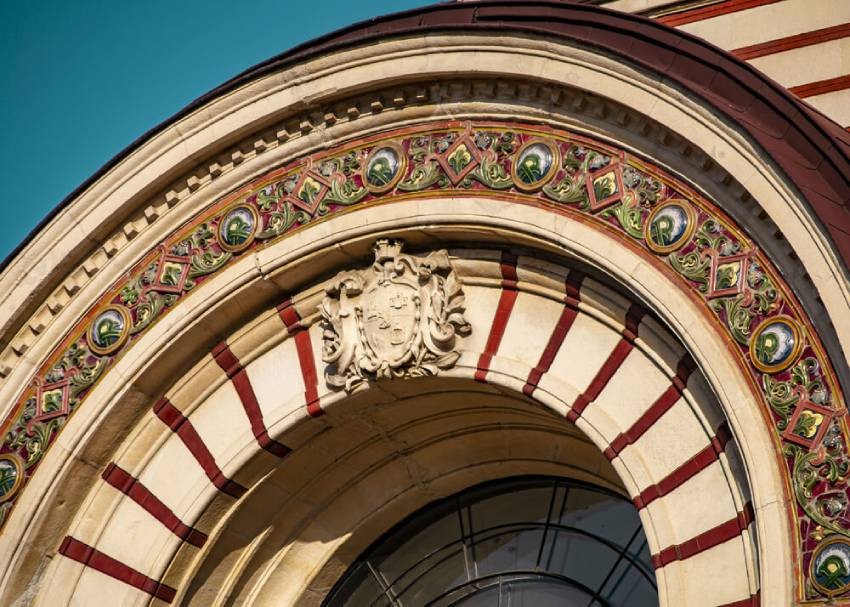
Rich ornamentation, exquisite design and attention to detail are the hallmarks of the facades and interior decoration of the few surviving public buildings built at the turn of the last century. Any resident of Sofia would immediately recognise the characteristic architectural ornaments on the building of the Halite shopping centre, the Central Mineral Bath (one part of which today houses the Sofia History Museum), the Synodal Palace on St Nedelya Square, the mausoleum of Prince Alexander Battenberg, the stained glass windows of the Sofia Library, etc. What they have in common is that they are all the work of one talented Bulgarian - the artist Haralampi Tachev (1875-1944). He was the first Bulgarian artist-decorator. He is also the author of the coat of arms of Sofia.
Although he was born in Plovdiv, Haralampi Tachev spent his entire conscious life in Sofia, working there and leaving his significant contribution to the image of the Bulgarian capital. The artist works in a characteristic architectural style of the early 20th century. "This is a form of the Bulgarian Secession, refracted through the preserved miniatures from the Middle Ages. He borrowed motifs from the decoration of old manuscripts and that is why his works are so richly decorated," Alexander Vachkov, a doctor of art history and one of the few researchers of Haralampi Tachev's legacy, told Radio Bulgaria:

"Just pausing and looking at the details, one can be amazed at the variety of colours and shapes. Particularly characteristic is the building of the Central Mineral Baths in Sofia, where the details are extraordinary. An interesting fact is that they were manufactured in Bulgaria, in the now defunct factory "Izida", in the nearby town of Elin Pelin. The details are made with a lot of love and professionalism by the workers themselves and indeed a lot of creativity and imagination has gone into the decoration of the building. There is almost no repetition of details, although there are rhythmically alternating modules on the facade. Years ago, when the restoration of the building's exterior began, the problem of restoring some time-damaged ornaments proved almost insurmountable. The technology was lost and the factory in Elin Pelin now produces tiles for household use. The skills of the old craftsmen have been lost and there is no one to restore such a sophisticated technique as the majolica used to decorate the bath in Sofia."

The artist's participation in the international art expositions at the beginning of the 20th century, such as those in Liege, Milan, London and Paris, was important. He was active in the design of the pavilions with which Bulgaria was represented, in which he incorporated particularly characteristic national elements - his work made a striking impression on the international public. Haralampi Tachev is also among the pioneers in heraldry. He made the coat of arms of Sofia on the occasion of Bulgaria's participation in the Universal Exhibition in Paris in 1900.

In practice, until this point, the beginning of the 20th century, heraldry was almost unknown in Bulgaria to both Bulgarian artists and foreign artists who came to work in the country. "It was designed on an emergency request in 1900, when preparations were underway for Bulgaria's participation in the World Exhibition in Paris. At some point, the city authorities realised that the capital had no coat of arms, and this was unacceptable for a country that was making its civilisational choices. Then the young artist Haralampi Tachev was commissioned to create a coat of arms for Sofia. He had already made a name for himself as a heraldic and applied artist, and to his credit he did very well with the task, even though he was only 25 years old at the time. The design of his coat of arms consists of 5 elements that fit into a stylized shield. Later the same design would be repeated in various forms in the coats of arms of many other Bulgarian towns, and his work would serve as a model for their making."
To celebrate the 120th anniversary of the birth of Bulgarian intellectual Dimitar Nenov, a screening of the music documentary Dimitar Nenov and the Dimensions of Elegance will take place on 11 November at the Consulate General of Bulgaria in New York,..
A special exhibition dedicated to the 140th anniversary of the Unification of the Principality of Bulgaria and Eastern Rumelia has been presented in the Latvian capital, Riga. “In a most noble way” is the motto of Bulgaria’s Unification of 1885,..
On 10 November, the European Music Festival will be offering music lovers a thrilling event. 2,500 years after the legendary Italian city of Naples was founded, Sofia will be celebrating the anniversary with a special event – a concert by Ars Nova..

+359 2 9336 661
